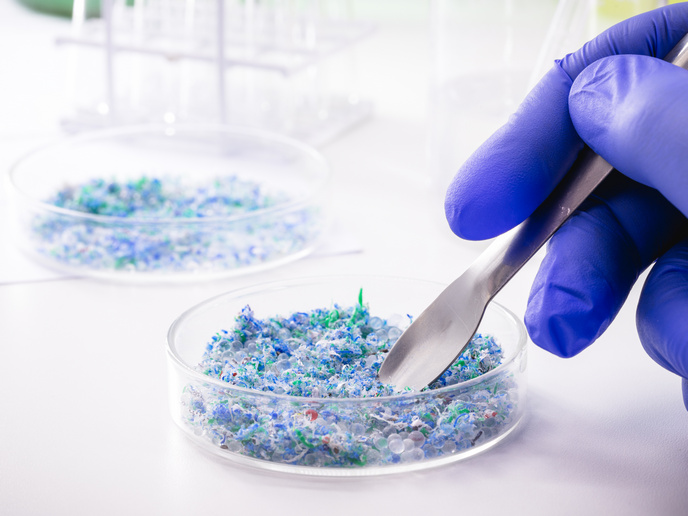Fighting the proliferation of plastics with early career training and detection technologies
Over 300 000 tonnes of plastic are released into the environment every year. Alarmingly, much of this waste is in the form of particles too small to see. Micrometre and nanometre sized plastic particles, or microplastics and nanoplastics (MNPs), have been found in soil, water, air and even our bodies. These particles are either intentionally added to industrial processes (primary MNPs) or originate from being broken down from larger sized plastic in the environment (secondary MNPs). To protect water supplies, a main pathway of pollution in the environment, the 2021 revised EC drinking water directive(opens in new window) (DWD) tasks water companies with increased inspection responsibilities. The MONPLAS(opens in new window) project, funded with the support of the Marie Skłodowska-Curie Actions(opens in new window) programme, supports the detection of plastic in waters by developing innovation technologies.
Training in microscopy and spectroscopy
With microplastics becoming more ubiquitous and increasingly prevalent in the environment, more data is needed on the sources, quantity and types of MNPs humans are exposed to and the associated health risks. For that researchers are looking to develop low-cost tools for assessing MNPs in water samples and beyond. Existing methods for detecting MNPs involve expensive equipment and highly trained personnel. By providing expert-level training, MONPLAS enables researchers to develop innovative, low-cost technology and detection tools. MONPLAS prepares early-stage researchers (ESRs) by giving them hands-on experience with existing methods. The 14 MONPLAS ESRs receive training in microplastic sampling, sample preparation and general photonic techniques used for analysis. Conventional techniques for MNP detection include an array of microscopy and spectroscopy tools. Raman(opens in new window) spectroscopy, similar to Fourier-transform infrared spectrometry, uses light to identify the chemical composition of the MNPs. Other techniques ESRs are trained to use include fluorescence microscopy and atomic force microscopy-infrared spectroscopy.
Innovative methods and technologies
Training personnel in conventional methods is only part of the answer. The principal objective of MONPLAS is the development of technologies for efficient and cost-effective instruments designed to support the implementation of the EU legislation through detection of MNPs. The second step of preparing scientists is thus the development of a wide range of possible solutions, including the evolution of existing techniques and the development of novel technologies. For that the participants explore optics, acoustics and the development of sensors and chips. One fruitful avenue is the incorporation of deep learning to identify MNPs. According to project fellow Clementina Vitali: “We designed an AI-based workflow specifically for recognising and categorising microplastic particles. This system significantly enhances our efficiency and accuracy in identifying and analysing microplastics in various samples.” MONPLAS fellows show great ingenuity in tackling the challenges for securing a safe water supply. In one case, problem-solving to improve the detection of MNPs through Raman spectroscopy led to the inexpensive and elegant solution of using metallic foils to boost signals through plasmonic nanostructures. In another study, research focuses on the creation of nanomaterials with enzyme-like properties for biosensing. The goal guiding this research is the integration of molecular diagnostic methods and nanotransducers onto small lab-on-a-chip devices for more accessible and efficient testing. In reference to 2019 levels, the global production of plastic is expected to triple by 2050. MONPLAS, with a focus on technical innovation and ESR training, is working to better understand the risks associated with micro- and nanoplastics and to strengthen the detection and protection of clean water supplies.







